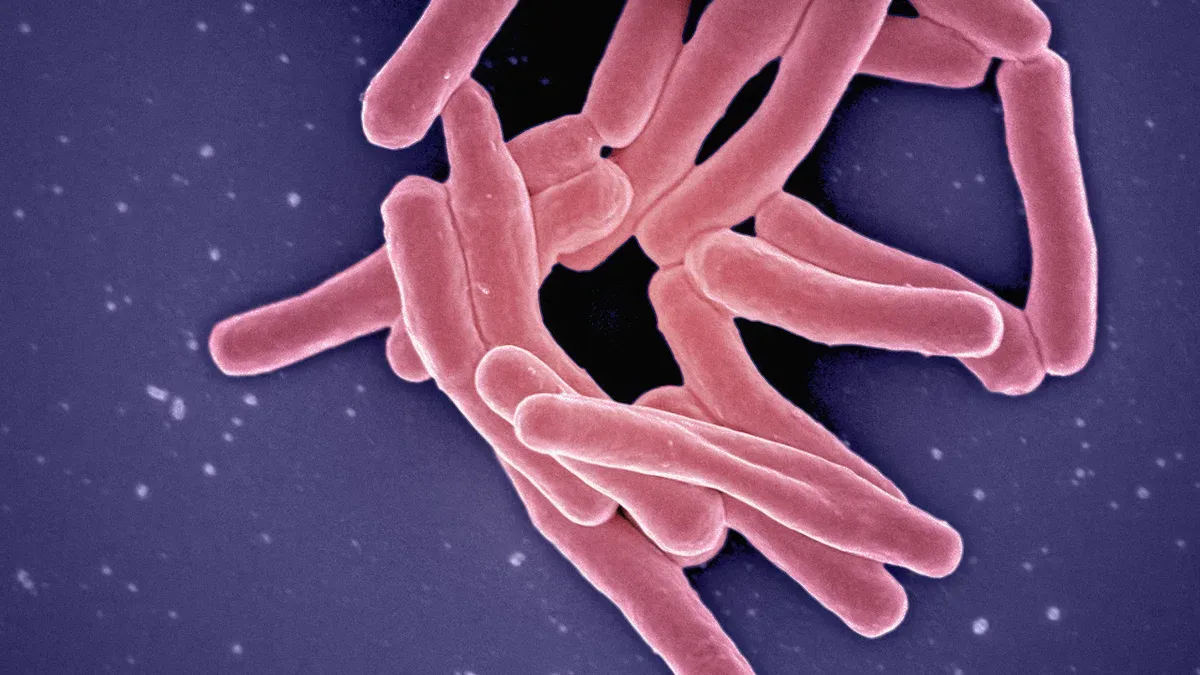
Bacterial vaginosis is not contagious. Many women mistakenly believe it spreads through sexual contact or poor hygiene. Understanding this fact is crucial, as over half a million new cases arise globally each year. Misconceptions can lead to unnecessary anxiety, so it’s vital to educate yourself about this condition.
Key Takeaways
Bacterial vaginosis is not contagious. It does not spread through sexual contact or poor hygiene.
Common symptoms include a fishy odor, unusual discharge, and vaginal irritation. Many women may not experience any symptoms.
Prevent bacterial vaginosis by practicing safe sex, maintaining good hygiene, and avoiding douching.
Bacterial Vaginosis Overview

Bacterial vaginosis (BV) is a common condition that occurs when there is an imbalance of bacteria in the vagina. It can lead to various symptoms, but many women may not experience any at all. Understanding the symptoms and how to diagnose and treat BV is essential for your health.
Symptoms of Bacterial Vaginosis
You might notice several symptoms if you have bacterial vaginosis. Here are the most common ones:
Vaginal discharge: This often appears off-white, gray, or greenish in color.
Odor: A fishy smell, especially after sex, is a typical complaint.
Vaginal itching or irritation: Many women report discomfort in the vaginal area.
Burning sensation during urination: This can occur for some individuals.
Approximately 50% of women with bacterial vaginosis report symptoms such as vaginal malodor, discharge, itching, and increased vaginal pH. Interestingly, up to 84% of individuals may not exhibit any symptoms at all.
Symptom | Description |
|---|---|
Vaginal discharge | Off-white, gray, or greenish-colored |
Odor | Fishy-smelling, especially after sex |
Vaginal itching or irritation | Commonly reported symptom |
Burning sensation during urination | Often experienced by those affected |
Diagnosis and Treatment Options
Diagnosing bacterial vaginosis involves a few methods. Healthcare providers often use the following criteria:
Diagnostic Method | Description |
|---|---|
Amsel’s Criteria | Requires at least three of the following: thin grayish-white discharge, vaginal pH > 4.5, positive whiff test, clue cells. |
Nugent Score | A laboratory method using Gram stain to classify bacterial flora based on scoring. |
Hay-Ison Criteria | An alternative scoring method based on Gram-stained smear findings, quicker for clinical use. |
Nucleic Acid Amplification Tests (NAATs) | Recommended for symptomatic women when traditional methods are unavailable. |
Once diagnosed, treatment options typically include antibiotics. The success rates for various antibiotics are as follows:
Antibiotic | Success Rate (%) | Comparison to Placebo (RR) | 95% CI |
|---|---|---|---|
Ornidazole | 97.4 | RR 15.13 | 2.37-96.6 |
Tinidazole | 78.4 | RR 8.83 | 2.19-35.62 |
Metronidazole | 69.7 | RR 6.21 | 3.07-12.57 |
Ofloxacin | 49 | N/A | N/A |
Secnidazole | 48.9 | RR 3.29 | 1.26-8.59 |
Clindamycin | 29 | RR 8.75 | 3.74-20.48 |
Probiotics | 22.5 | N/A | N/A |
Placebo | 5.2 | N/A | N/A |
After treatment, follow-up procedures are important. If symptoms resolve, follow-up visits may not be necessary. However, if you experience recurrent bacterial vaginosis, consider these options:
Use local antiseptics or maintenance therapy with topical metronidazole.
Vaginal probiotics can help prevent recurrence.
For recurrent BV, using 0.75% metronidazole gel twice weekly for 4–6 months can reduce recurrences.
Understanding bacterial vaginosis, its symptoms, and treatment options empowers you to take charge of your health.
Bacterial Vaginosis vs. Other Infections
Understanding the differences between bacterial vaginosis and other infections is essential for your health. Two common conditions that often get confused with BV are yeast infections and sexually transmitted infections (STIs). Let’s break down how these conditions differ.
Yeast Infections
Yeast infections, also known as vulvovaginal candidiasis, are caused by an overgrowth of the fungus Candida. Here are some key points to consider:
Prevalence: Bacterial vaginosis is the most common vaginal infection in women of reproductive age, with a prevalence of 24.9%. In contrast, yeast infections occur less frequently.
Symptoms: The symptoms of bacterial vaginosis and yeast infections differ significantly. Here’s a comparison:
Bacterial Vaginosis Symptoms | Yeast Infection Symptoms |
|---|---|
Thin, watery discharge, often more noticeable after sex | Thick, white, clumpy discharge resembling cottage cheese |
Strong, fishy odor, especially after sex | No significant odor, or a yeasty smell if present |
Vaginal itching, less common than with yeast infections | Intense itching and irritation around the vagina and vulva |
Discomfort or burning sensation during urination | Pain or discomfort during intercourse or urination |
No redness or inflammation of the vulva | Redness and swelling of the vulva |
As you can see, the symptoms can help you distinguish between the two conditions. If you notice a strong odor and thin discharge, it may indicate bacterial vaginosis. On the other hand, thick discharge and intense itching suggest a yeast infection.
Sexually Transmitted Infections
Sexually transmitted infections (STIs) are another category that can be confused with bacterial vaginosis. Here’s how they compare:
Transmission: Bacterial vaginosis is not contagious, while STIs spread through sexual contact. However, having BV can increase your susceptibility to STIs like chlamydia and gonorrhea.
Symptoms: Symptoms of STIs can overlap with those of bacterial vaginosis. Common symptoms of STIs include unusual discharge, burning during urination, and pelvic pain. If you experience these symptoms, it’s crucial to seek medical advice.
Note: Bacterial vaginosis has a bidirectional relationship with STIs. This means that having BV can increase your risk of contracting STIs, and vice versa.
Prevalence: The prevalence of bacterial vaginosis is reported at 17.2%, while STIs are reported at 15.2%. Both conditions are common, but they require different approaches for treatment and prevention.
Causes of Bacterial Vaginosis

Risk Factors
Understanding the risk factors for bacterial vaginosis can help you take preventive measures. Here are some common causes:
Cause of Bacterial Vaginosis |
|---|
Vaginal infections |
Multiple sexual partners |
Recent antibiotic use |
Smoking |
Contraceptive use |
Having multiple sexual partners significantly increases your risk. Studies show that 53.3% of women with bacterial vaginosis reported this as a factor. Additionally, recent antibiotic use can disrupt the natural balance of bacteria in your vagina, leading to BV.
Prevention Tips
You can take several steps to reduce your risk of developing bacterial vaginosis:
Practice Safe Sex: Use condoms consistently to lower your risk of BV and sexually transmitted infections.
Limit Sexual Partners: Reducing the number of sexual partners can help maintain a healthy vaginal environment.
Avoid Douching: Douching can upset the natural balance of bacteria in your vagina. Instead, focus on gentle hygiene practices.
Maintain Good Hygiene: Regularly wash your genital area with mild soap and water. Avoid using scented products that can irritate the area.
Consider Probiotics: Some studies suggest that probiotics may help restore healthy vaginal flora and reduce the recurrence of bacterial vaginosis.
By being aware of these risk factors and implementing preventive measures, you can take control of your vaginal health and reduce the likelihood of bacterial vaginosis.
In summary, bacterial vaginosis is not contagious. Understanding this fact helps reduce anxiety and promotes better health choices. Awareness of symptoms, risk factors, and preventive measures is crucial. Remember, treating male partners can significantly reduce recurrence rates, as shown in recent studies.
Study Type | Findings | Implications |
|---|---|---|
RCT of Male Partner Treatment | Recurrence of BV was 35% when male partners were treated vs 63% when untreated | Suggests that treating male partners significantly reduces BV recurrence in women |
StepUp Study | Treating male partners reduced BV recurrence by 60% | Indicates male partners can harbor and reintroduce BV bacteria, affecting recurrence rates |
FAQ
What causes bacterial vaginosis?
Bacterial vaginosis occurs due to an imbalance of bacteria in your vagina. Factors like multiple sexual partners and recent antibiotic use can contribute.
How can I prevent bacterial vaginosis?
You can prevent bacterial vaginosis by practicing safe sex, maintaining good hygiene, and avoiding douching. Limiting sexual partners also helps.
Is bacterial vaginosis serious?
Bacterial vaginosis is not usually serious but can lead to complications if untreated. It may increase your risk of STIs and pregnancy issues.


